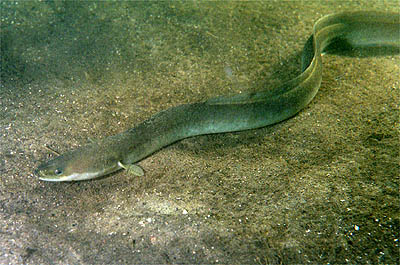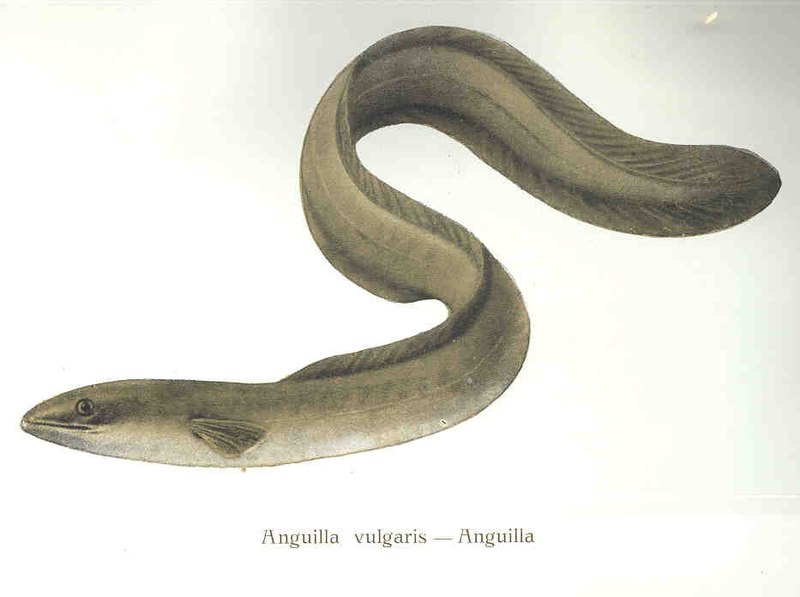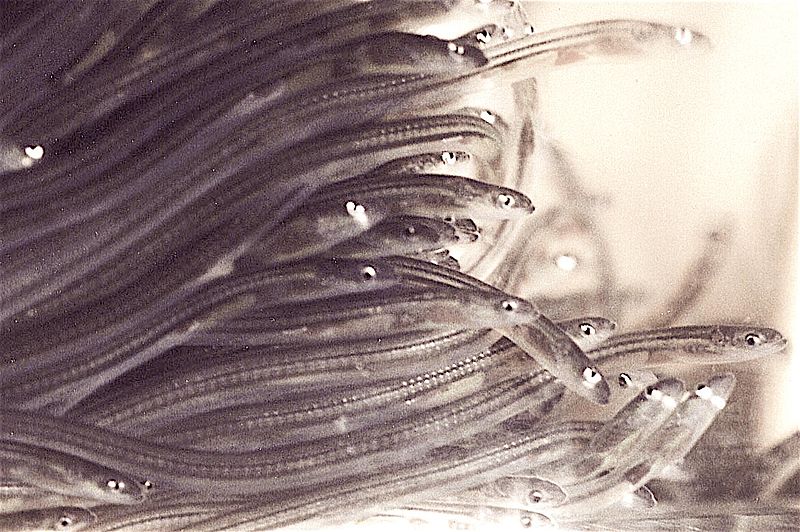One of the marine world’s greatest migrations from the Caribbean across the Gulf Stream, the European eel (Anguilla anguilla) makes the vast four thousand mile journey twice in its lifecycle.
Born as larvae among the ocean flora of the Sargasso Sea, these Bermudan natives drift across the Gulf Stream to the Mediterranean and Northern Europe, a feat which takes up to two years.
Undergoing metamorphosis from transparent leptocephali to adolescent glass eels, they begin to inhabit river estuaries marking them as one of the few marine species which undergo catadromous migration, inhabiting both the sea and freshwater habitats in their lifetimes.
From here they morph further from elvers, Yellow eels, before taking their final form brilliant Silvers. Over several years they have developed pigmentation, an enlargement in the eyes and a restructuring of the digestive system to suit their newly inhabited freshwaters,
However, with interruptions to the flow of the Gulf Stream due to warming waters brought on by climate change, their journeys have become more difficult. Since only the 1980s, European eels populations have cratered by up to 95%. Not only is this downstream from climate change itself, but the ecological turmoil brought on by wetland drainage, barriers to migration such as dams, overfishing, and a preponderance of pollution and disease.
These woes interfere with one of the most important parts of the eel’s life cycle: its remigration across the swell of the Atlantic back to Sargossa to breed. If they are fortunate enough to make it this far to reproduce they finally perish.
With so many vulnerable species the International Union for Conservation of Nature (IUCN) has classified the European eel as “Critically Endangered,” highlighting the urgent need for conservationists to take action.
In Britain, organisations like the Wildfowl & Wetlands Trust (WWT) are actively involved in restoring wetland habitats, providing crucial environments for eels to thrive.
Efforts to install fish passes and remove obsolete barriers have been implemented to facilitate eel migration, allowing access to upstream habitats essential for their development.
The Canal & River Trust emphasizes the importance of responsible fishing practices, advocating for the return of captured eels to the water to support population recovery.
Controversial measures, such as the export of juvenile eels from the Severn Estuary to Russia, have been undertaken with the intention of providing the eels with access to less degraded habitats, although these actions have sparked debate among conservationists.
Beyond their ecological importance, European eels hold a rich cultural heritage in Britain.
Famously, eels have been a staple in British cuisine for centuries, particularly in the East End of London, where dishes like jellied eels became iconic. This delicacy, made by boiling eels and allowing the broth to set into a jelly, was especially popular among the working class in the 18th and 19th centuries (somewhat less so today).
Eels feature in various British myths and legends. In some folklore, eels were believed to possess mystical qualities, and their elusive nature contributed to tales of them being supernatural creatures.
In Britain, species. Moreover, acknowledging and preserving the cultural heritage associated with eels can foster greater public engagement and support for conservation initiatives. The plight of the European eel serves as a poignant reminder of the broader challenges facing freshwater species worldwide and underscores the need for integrated approaches to biodiversity conservation.efforts to restore habitats, remove migratory barriers, and regulate fishing practices are crucial steps toward ensuring the survival of this enigmatic species.

European Eel

Anguilla vulgaris

Glass Eels. Adolescent Phase
